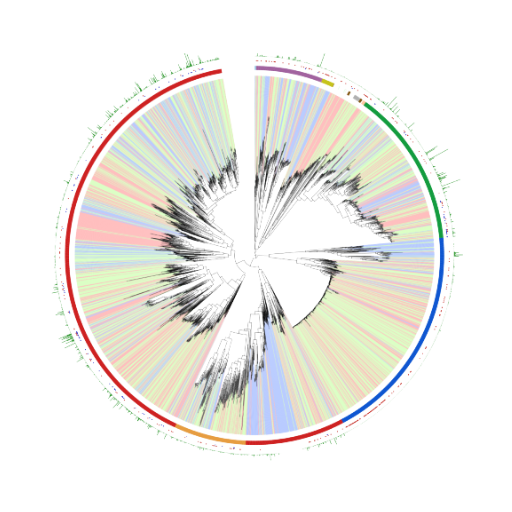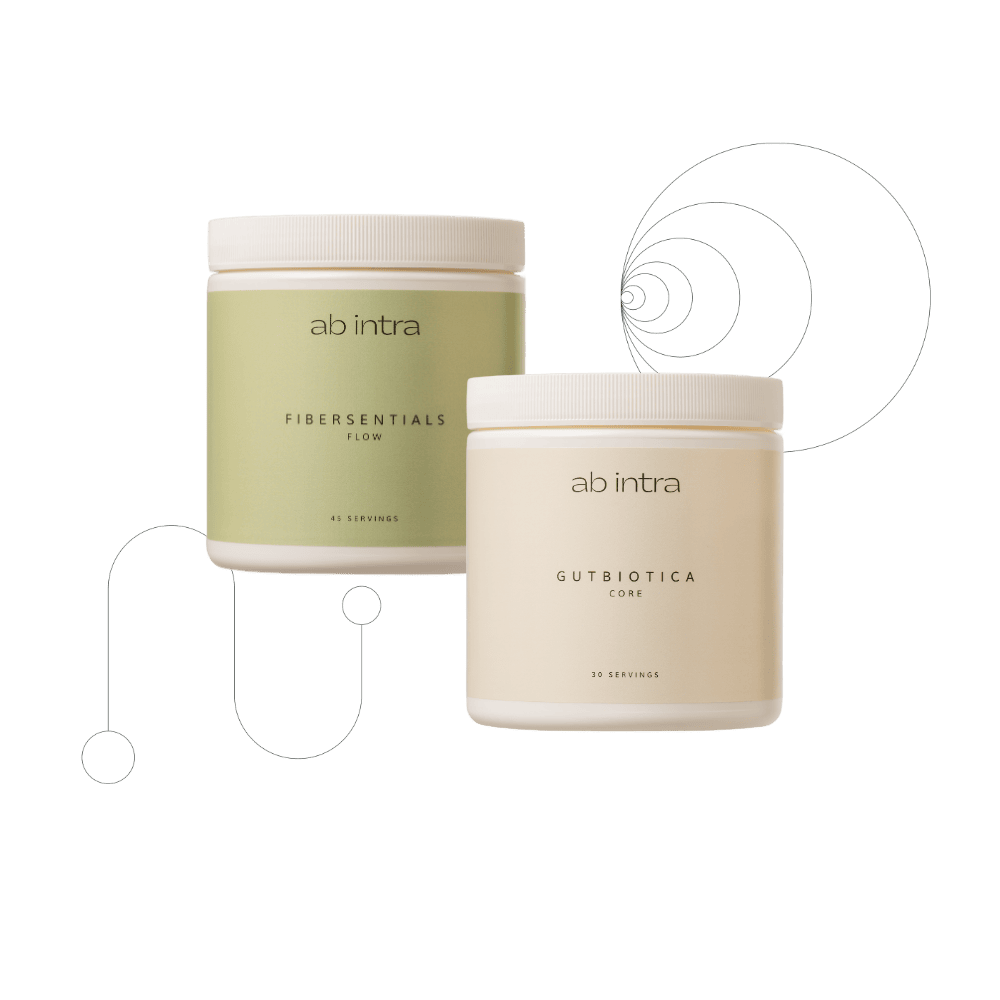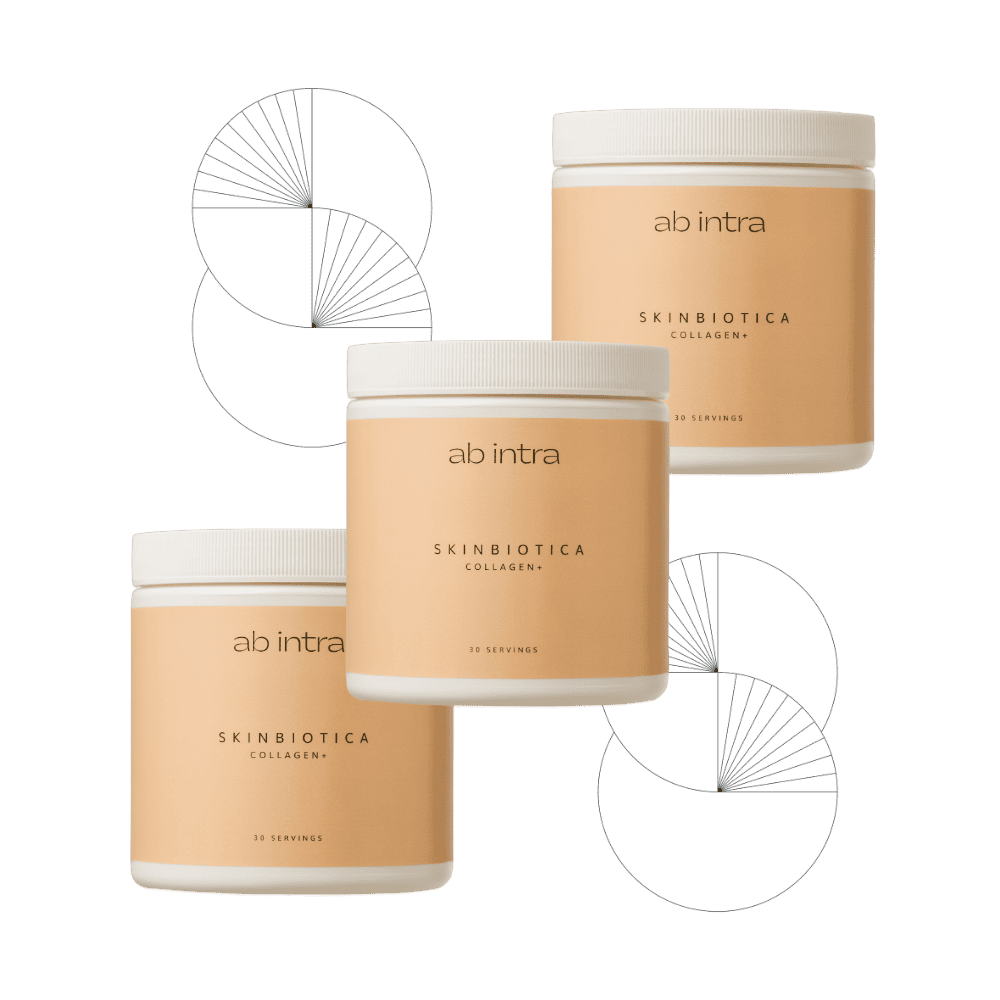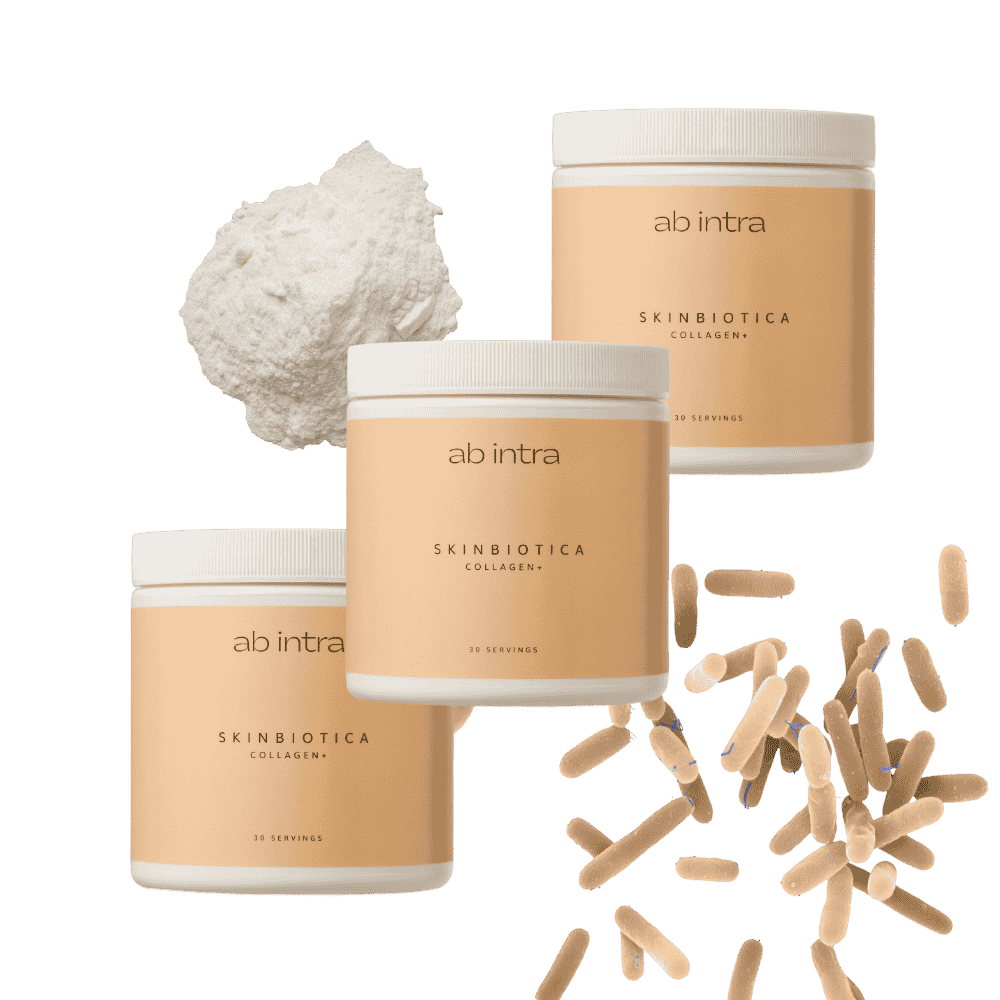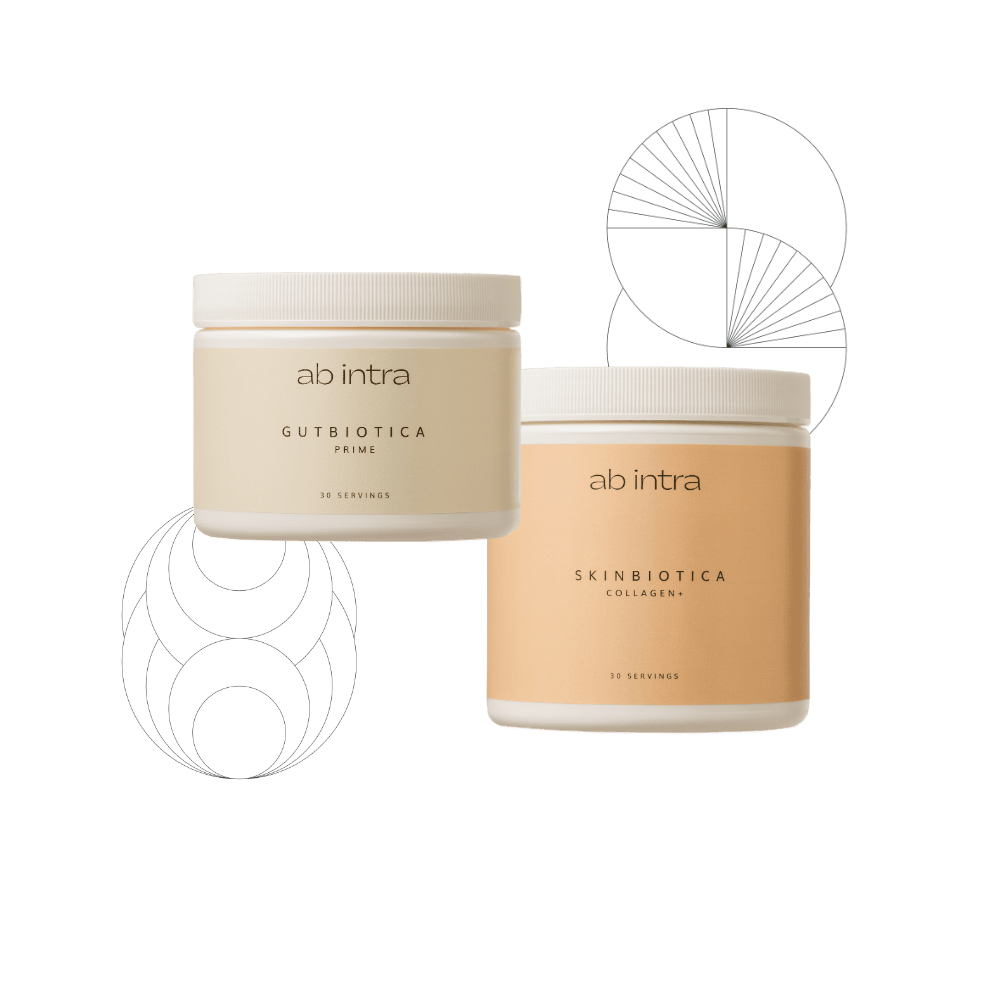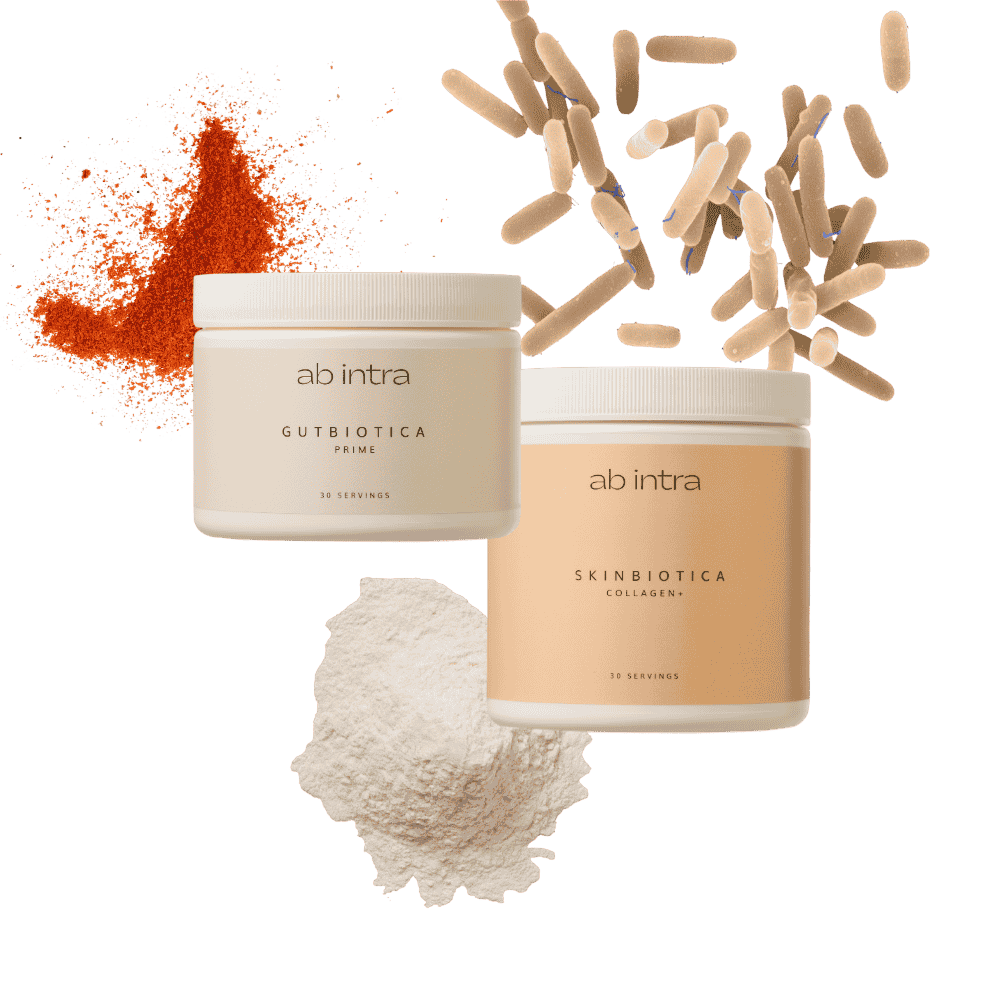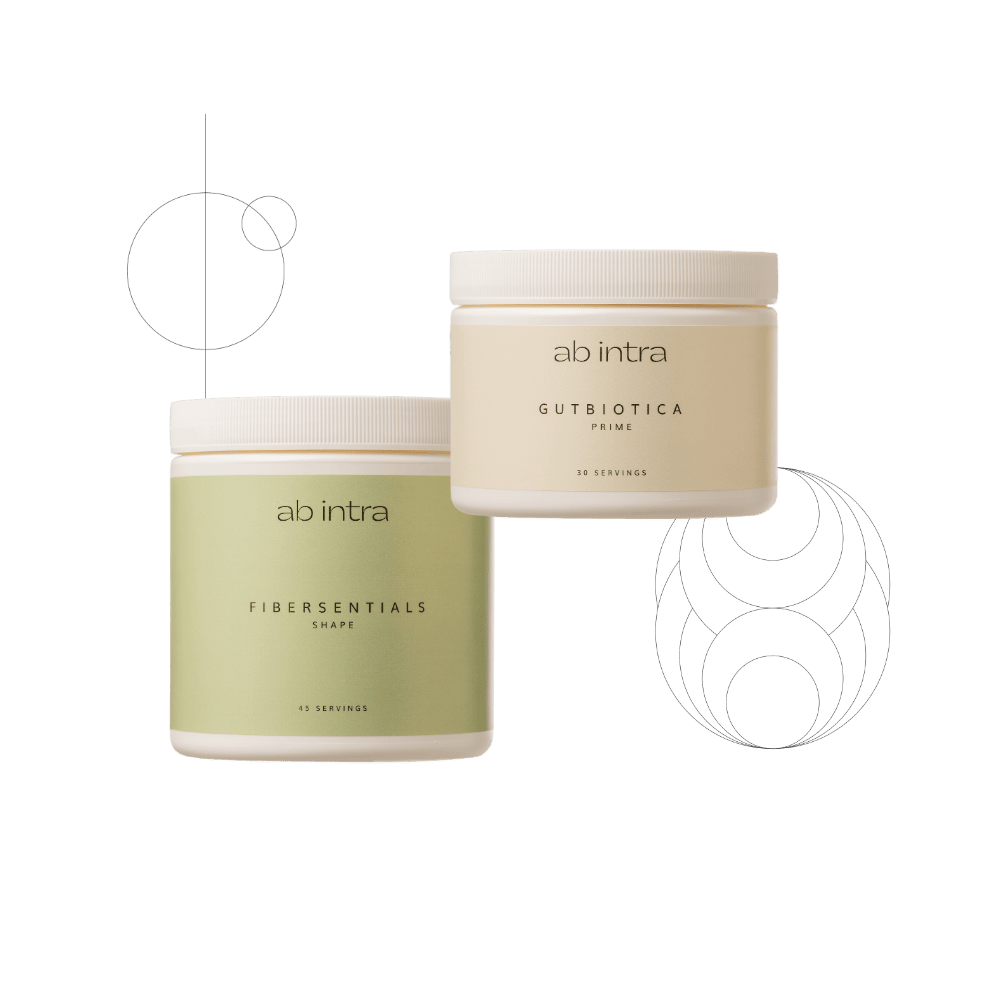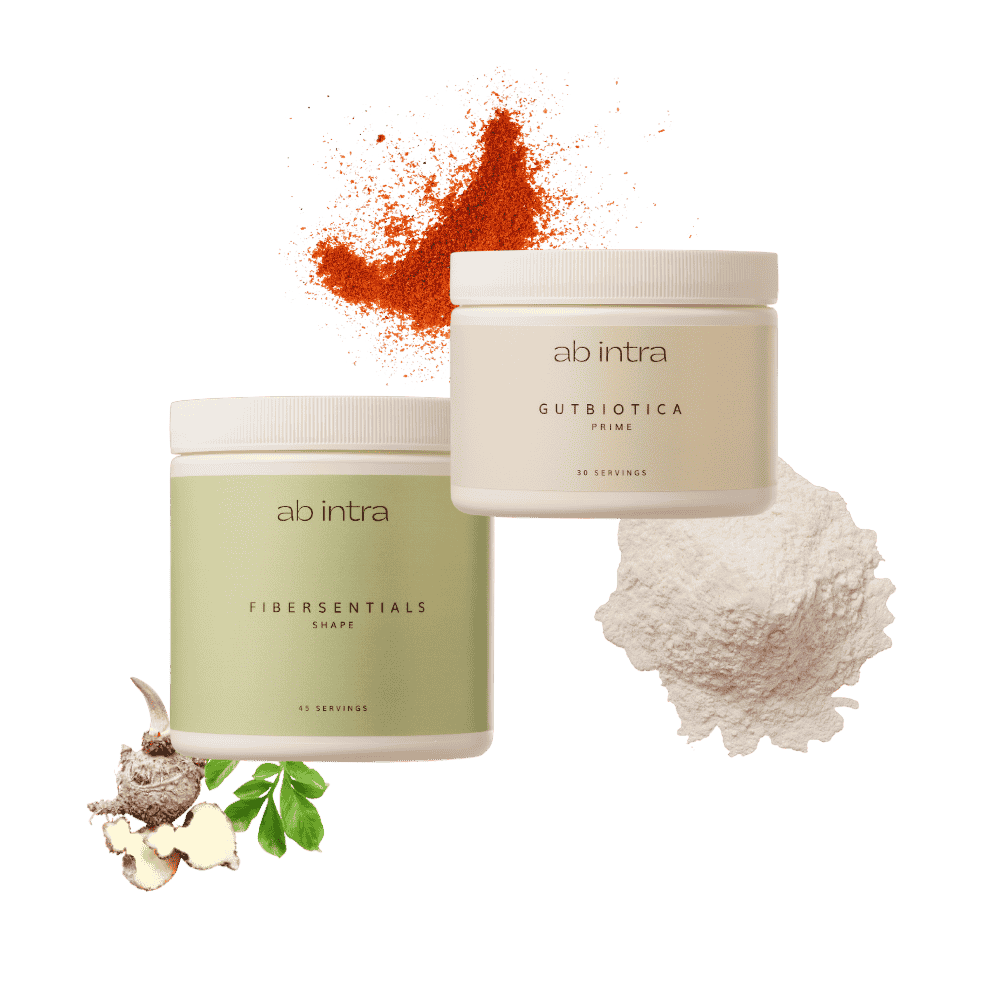We like to think of ourselves as individuals, but from the moment we’re born, we are not alone. Trillions of microbial partners, especially those in our gut, are with us every step of the way. In fact, we wouldn’t be human without them.
This is the story of co-evolution: a biological partnership forged over millennia. And it’s at the very foundation of how AB INTRA approaches health today.
A Partnership Written Into Us
Our evolutionary story isn’t solely written in our DNA. It’s also encoded in the genes of the vast microbial world we carry inside us. These bacteria, viruses, fungi, and archaea have been with us for as long as humans have existed. We’ve adapted to life with them and they to us.
Vertical transmission (from mother to child) and horizontal transmission (from our environment) have passed microbial lineages down through generations, adapting to changes in climate, diet, and culture. These organisms are no longer just passengers. They influence how we digest food, regulate inflammation, train our immune system, and even how we feel.
Every human has a microbiome as unique as a fingerprint [1]. And unlike the ~23,000 genes in the human genome, our microbial genes number in the millions, over 3 million, producing thousands of essential metabolites [2]. This second genome doesn’t just complement us; it completes us.
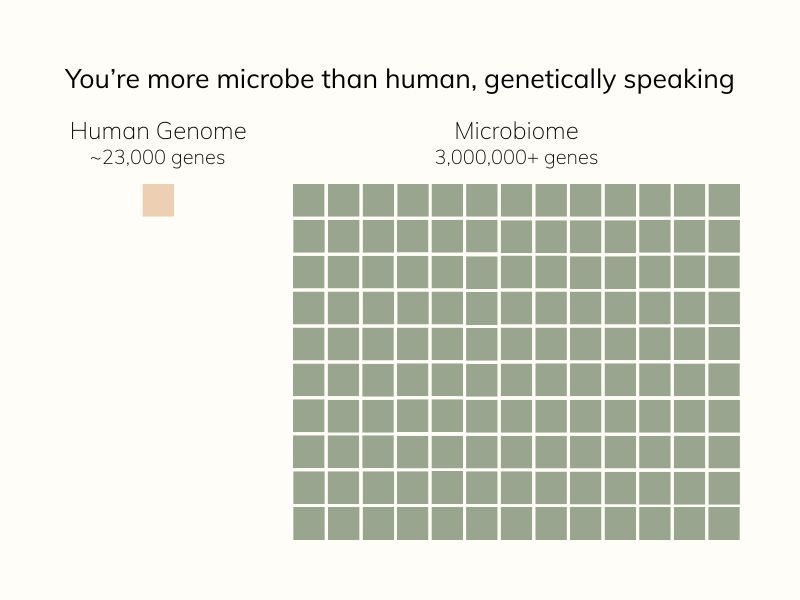
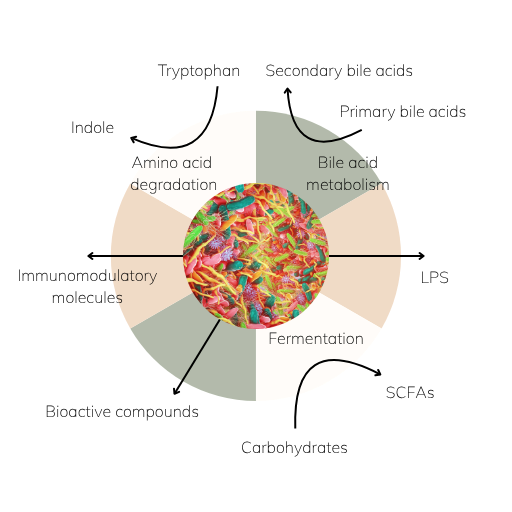
Adapted from de Vos et al., Gut (2022). Licensed under CC BY 4.0. https://creativecommons.org/licenses/by/4.0/
Our Microbial Co-Authors
Why do we need this microbial “second genome”? Because evolution taught us to outsource.
Maintaining a gene comes at a cost, and our bodies learned to conserve energy by relying on microbes to perform some of the heavy lifting. Together, we’ve formed a division of labor: one that turns indigestible plant fibers into energy, regulates our immune responses, and helps keep our metabolism in check.
Our gut microbes:
- Ferment fiber into short-chain fatty acids (SCFAs) like butyrate, propionate, and acetate, which reduce inflammation and nourish gut lining cells [3,4].
- Contribute to the production of vitamin K and B12, which we cannot synthesize on our own.
- Help protect against pathogens, by maintaining a competitive environment.
- Interact with our immune system to keep it well-trained, not over-reactive [5].
But this harmony requires maintenance. It’s a partnership built on nourishment.
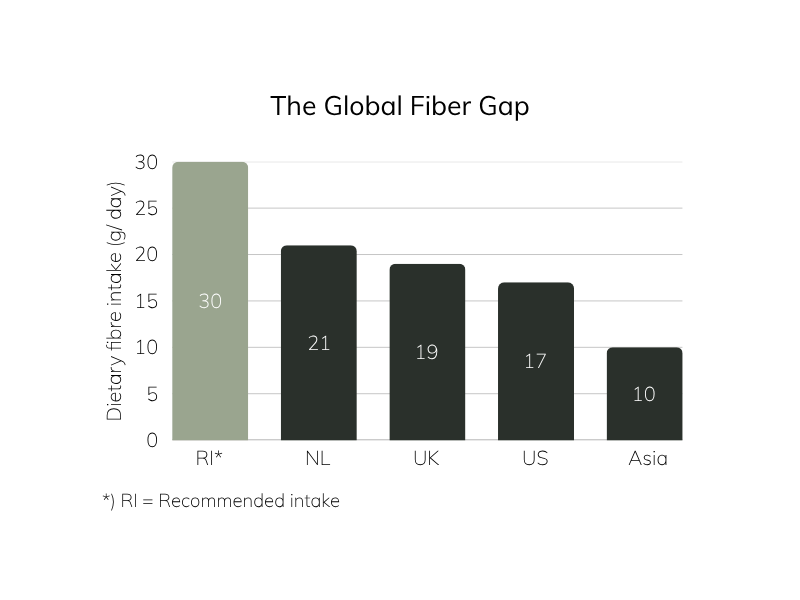
Modern Life, Ancient Design
Today’s lifestyle often disrupts the harmony we evolved to rely on. The widespread adoption of the Western diet, high in processed foods and low in diverse fibers, has reshaped the composition of our gut microbiota [6].
We see an increase in Firmicutes and Enterobacteriaceae, and a reduction in Actinobacteria and Prevotella, both genera associated with better fiber metabolism and lower inflammation [7,8].
These changes matter. The gut is losing its ability to generate key compounds like short-chain fatty acids (SCFAs), vitamin K, and B12, along with beneficial, anti-inflammatory bacterial species [9].
At the same time, the diversity of our microbiota has declined. Prehistoric humans are estimated to have consumed over 100 grams of fiber daily from wild plants and tubers [10]. Modern populations consume just 10–21 grams [11–13], falling well short of the 30–40 gram recommendation [14]. This “fiber gap” has become a bottleneck in our biology.
That’s where our supplements, like the Super Daily Duo, comes in. With gut-balancing probiotics and fiber-dense prebiotics in one convenient routine, it’s built to nourish your microbiome like your body remembers.
Nourish your microbiome daily with fiber-rich prebiotics and proven probiotics—just as nature intended.
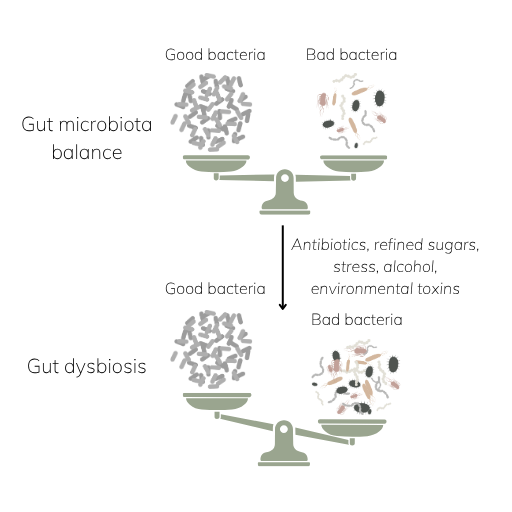
A Fragile Mutualism
Our ancestors didn’t choose their microbial companions, symbiosis was inevitable. But what evolution demanded, they turned into cooperation.
This relationship is a textbook example of mutualism:
- We provide a stable habitat and a constant food supply.
- Microbes help us extract energy, tune our immune system, and regulate metabolic functions.
It’s a win-win. But it’s also fragile. Like any relationship, it requires care.
Modern interventions, to name a few: antibiotics [15], refined sugars [16], environmental toxins [17] can unravel what took millennia to perfect. To repair this relationship, we must nourish it intentionally.
The AB INTRA Philosophy: Guided by Evolution
At AB INTRA, we are inspired by the quiet brilliance of our internal ecosystem. We recognize that human microbiome co-evolution is not a thing of the past, it’s a foundation for our future.
Our approach is built on these principles:
- We’re built for symbiosis. The microbiome is not optional, it’s essential.
- Nourishing your gut microbiome takes time. Consistency, not perfection, brings long-term resilience.
- Science should serve our biology. We formulate with prebiotics, probiotics, and postbiotics chosen to respect and restore your inner ecosystem.
We don’t fight nature, we work with it. By understanding the logic of our evolutionary design, we offer tools to rebuild a more aligned, resilient state of health.
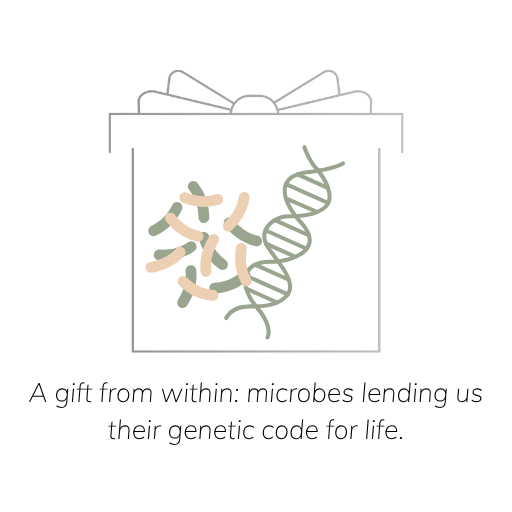
Conclusion: A Relationship Worth Nourishing
Humans and microbes were never meant to be apart. From birth to late age, our gut flora shapes how we digest, fight illness, feel, and even age.
The science is clear: we need them, and they need us.
By nourishing this partnership, through fiber, microbial diversity, and targeted support, we give our bodies the blueprint they were built on.
At AB INTRA, this isn’t a theory. It’s a commitment. To health. To balance. To the evolution that lives on inside you.
Blog Image Credit: Adapted from Figure 3a in Almeida, A., Mitchell, A.L., Boland, M. et al. A new genomic blueprint of the human gut microbiota. Nature 568, 499–504 (2019). Licensed under CC BY 4.0. View original article. Figure cropped to display the phylogenetic tree only.
References
- Rinninella et al., “What is the Healthy Gut Microbiota Composition? A Changing Ecosystem across Age, Environment, Diet, and Diseases,” Microorganisms, vol. 7, no. 1. 2019, doi: 10.3390/microorganisms7010014.
- A. M. Valdes, J. Walter, E. Segal, and T. D. Spector, “Role of the gut microbiota in nutrition and health,” BMJ, vol. 361, p. k2179, Jun. 2018, doi: 10.1136/bmj.k2179.
- P. D. Cani and B. F. Jordan, “Gut microbiota-mediated inflammation in obesity: a link with gastrointestinal cancer,” Nat. Rev. Gastroenterol. Hepatol., vol. 15, no. 11, pp. 671–682, 2018, doi: 10.1038/s41575-018-0025-6.
- E. S. Chambers, T. Preston, G. Frost, and D. J. Morrison, “Role of Gut Microbiota-Generated Short-Chain Fatty Acids in Metabolic and Cardiovascular Health,” Curr. Nutr. Rep., vol. 7, no. 4, pp. 198–206, 2018, doi: 10.1007/s13668-018-0248-8.
- D. Zheng, T. Liwinski, and E. Elinav, “Interaction between microbiota and immunity in health and disease,” Cell Res., vol. 30, no. 6, pp. 492–506, 2020, doi: 10.1038/s41422-020-0332-7.
- E. D. Sonnenburg and J. L. Sonnenburg, “The ancestral and industrialized gut microbiota and implications for human health,” Nat. Rev. Microbiol., vol. 17, no. 6, pp. 383–390, 2019, doi: 10.1038/s41579-019-0191-8.
- E. R. Davenport, J. G. Sanders, S. J. Song, K. R. Amato, A. G. Clark, and R. Knight, “The human microbiome in evolution,” BMC Biol., vol. 15, no. 1, p. 127, 2017, doi: 10.1186/s12915-017-0454-7.
- B. Senghor, C. Sokhna, R. Ruimy, and J.-C. Lagier, “Gut microbiota diversity according to dietary habits and geographical provenance,” Hum. Microbiome J., vol. 7–8, pp. 1–9, 2018, doi: https://doi.org/10.1016/j.humic.2018.01.001.
- E. Thursby and N. Juge, “Introduction to the human gut microbiota,” Biochem. J., vol. 474, no. 11, pp. 1823–1836, May 2017, doi: 10.1042/BCJ20160510.
- S. Jew, S. S. AbuMweis, and P. J. H. Jones, “Evolution of the Human Diet: Linking Our Ancestral Diet to Modern Functional Foods as a Means of Chronic Disease Prevention,” J. Med. Food, vol. 12, no. 5, pp. 925–934, Oct. 2009, doi: 10.1089/jmf.2008.0268.
- E. L. Sanderman-Nawijn, H. A. M. Brants, C. S. Dinnissen, M. C. Ocké, and C. T. M. van Rossum, “Energy and nutrient intake in the Netherlands. Results of the Dutch National Food Consumption Survey 2019-2021,” De inname van energie en voedingsstoffen in Nederland. Resultaten van de Nederlandse voedselconsumptiepeiling 2019-2021. Rijksinstituut voor Volksgezondheid en Milieu RIVM, 2024.
- Public Health England FSA, “National Diet and Nutrition Survey Results from Years 7 and 8 (combined) of the Rolling Programme (2014/2015 to 2015/2016),” 2018.
- U.S. Department of Agriculture, “What We Eat in America, NHANES 2017–2018: Usual Nutrient Intakes from Food and Beverages, by Gender and Age,” 2020.
- Gezondheidsraad, “Guideline for dietary fibre intake (No. 2006/03E),” The Hague, 2006.
- M. P. Francino, “Antibiotics and the Human Gut Microbiome: Dysbioses and Accumulation of Resistances,” Front. Microbiol., vol. Volume 6-, 2016.
- K. Garcia, G. Ferreira, F. Reis, and S. Viana, “Impact of Dietary Sugars on Gut Microbiota and Metabolic Health,” Diabetology, vol. 3, no. 4. pp. 549–560, 2022, doi: 10.3390/diabetology3040042.
- K. Chiu, G. Warner, R. A. Nowak, J. A. Flaws, and W. Mei, “The Impact of Environmental Chemicals on the Gut Microbiome,” Toxicol. Sci., vol. 176, no. 2, pp. 253–284, Aug. 2020, doi: 10.1093/toxsci/kfaa065.
Next in Your Gut Health Journey
Explore further the fascinating world of gut health. Because better health is built one insight at a time.
Where Your Gut Meets Science
€ 269,85 Original price was: € 269,85.€ 214,95Current price is: € 214,95. incl. VAT
Consistency meets radiance. A 3-month supply of Skinbiotica COLLAGEN+—science-backed skin nutrition to support skin collagen, elasticity, and glow from within.
€ 209,90 Original price was: € 209,90.€ 179,95Current price is: € 179,95. incl. VAT
Complete beauty from within—Gutbiotica PRIME provides comprehensive microbiome support while Skinbiotica COLLAGEN+ promotes radiant and elastic skin.
€ 164,90 Original price was: € 164,90.€ 139,95Current price is: € 139,95. incl. VAT
A smart pairing for gut microbiome and weight support with Gutbiotica CORE and Fibersentials SHAPE to maintain a happy gut and support satiety naturally.
